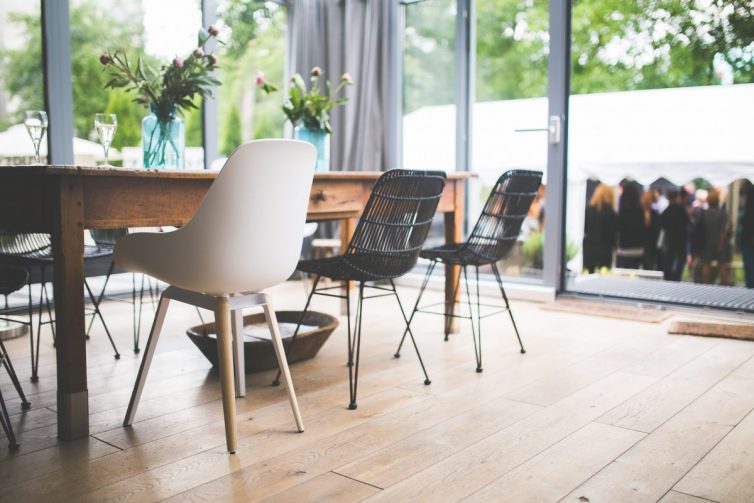If you’re refurbishing a property and plan to lay new floors, you may be considering both laminate flooring and luxury vinyl tiles.
You may be wondering how the two types of flooring differ, and what they’re best suited for? To understand laminate and Luxury vinyl tiles (LVT) better, read through our guide below. We’ll help you choose the best type of flooring for your project.
Similarities and differences:
- Both are affordable: laminate and luxury vinyl flooring are cost-effective solutions, especially when compared to hardwood, tile and stone flooring. They give the look of the finest natural materials, but at a much lower price.
- Easy to fix: if somebody drops a heavy object and scratches/dents the floor, the section of laminate or LVT can be replaced with ease. Neither stone nor hardwood floors offer this benefit.
- Easy to maintain: tile, stone, and hardwood floors are much harder to maintain, requiring specialist care. In contrast, laminate and LVT floors only require hoovering and light mopping.
- Both offer easy installation (compared other types of flooring – see more details below).
- Very durable: both types of flooring are very durable and suited to busy family homes. In addition, a number of manufacturers sell commercial grade laminate and LVT flooring. They offer superior wear resistance for high traffic areas, such as hotel lobbies or office buildings.
- Feeling: laminate feels more like wood. In contrast, LVT is made from vinyl and can feel more like plastic.
- Laminate offers better durability: professionals agree that vinyl tiles can be easier to break or damage (especially when heavy items are dropped onto the floor).
- Stain resistance: laminate flooring is stain resistant, but some types of luxury vinyl tiles can stain easily. This is an important consideration if the flooring is to be used in areas where spillages may occur often (in kitchens, for example).
- Installation: although both types of flooring are easy to install (compared with stone, tile, slate and hardwood flooring) they’re often installed using different methods. See below for specific details.
Usage and suitability:
Laminate flooring is great for use throughout the home, due to its easy installation, low cost, and likeness for real wood.
However, LVT is highly moisture resistant. This makes it suitable for rooms with high humidity, and in situations where you might expect puddles of water to collect (such as bathrooms and near sink areas, for example).
Construction and design:
LVT is created using 3D printing technology. The vinyl tiles can be printed with realistic-looking designs that mimic the grain of wood or the texture of slate, for example.
Laminate flooring is made from layers of high-density fibreboard, known as HDF or hardboard. The layers ensure the laminate flooring is hardwearing, durable and rigid. Meanwhile, luxury vinyl tiles are made from layers of PVC vinyl.
Installation methods:
As we touched on above, both types of flooring are installed differently.
Traditionally, luxury vinyl is installed by gluing tiles to the subfloor. Alternatively, some products come with adhesive backs, that can be peeled and stuck to the floor. Though, in recent years, manufacturers have created newer types of luxury vinyl tiles that can be fitted using the “floating floor” method too.
Image credits: Scandinavian dining room from KaboomPics
